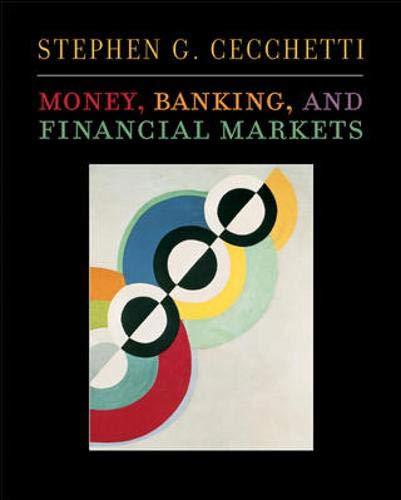Question
17. Consider a stock, XYZ, whose current price is $100 with volatility equal to 60% per annum. XYZ does not pay dividends. The annual (not
17. Consider a stock, XYZ, whose current price is $100 with volatility equal to 60% per annum. XYZ does not pay dividends. The annual (not continuously compounded) risk free interest rate is 12%.
(i) Consider a standard European option on XYZ with 3 months to maturity and exercise price E=100. What is the Black-Scholes value of the call option?
(ii) What is the value of a put on XYZ with the same E and same time to maturity as the call?
(iii) The CBOE has recently approved the creation of a special European option on XYZ, which they are calling a "High-Five". This high-five, on expiration, gives the holder the right to sell the underlying stock (XYZ) for the highest stock price that occurred during the life of the option (inclusive of the date on which it was issued) minus $5.00. Assuming this option has a maturity of 3 months and there are four `trading periods' in this time period. What is the price of this High-Five? (Hint use the Binomial model and remember that the Binomial model uses the per period interest rate calculated on a simple compounding basis).
(iv) If you were to attempt to replicate this option with a position in the XYZ stock and risk free debt. what position would you initially construct? How would it change if the up state were first observed (context of this question is still the four period binomial model.
Step by Step Solution
There are 3 Steps involved in it
Step: 1

Get Instant Access to Expert-Tailored Solutions
See step-by-step solutions with expert insights and AI powered tools for academic success
Step: 2

Step: 3

Ace Your Homework with AI
Get the answers you need in no time with our AI-driven, step-by-step assistance
Get Started


